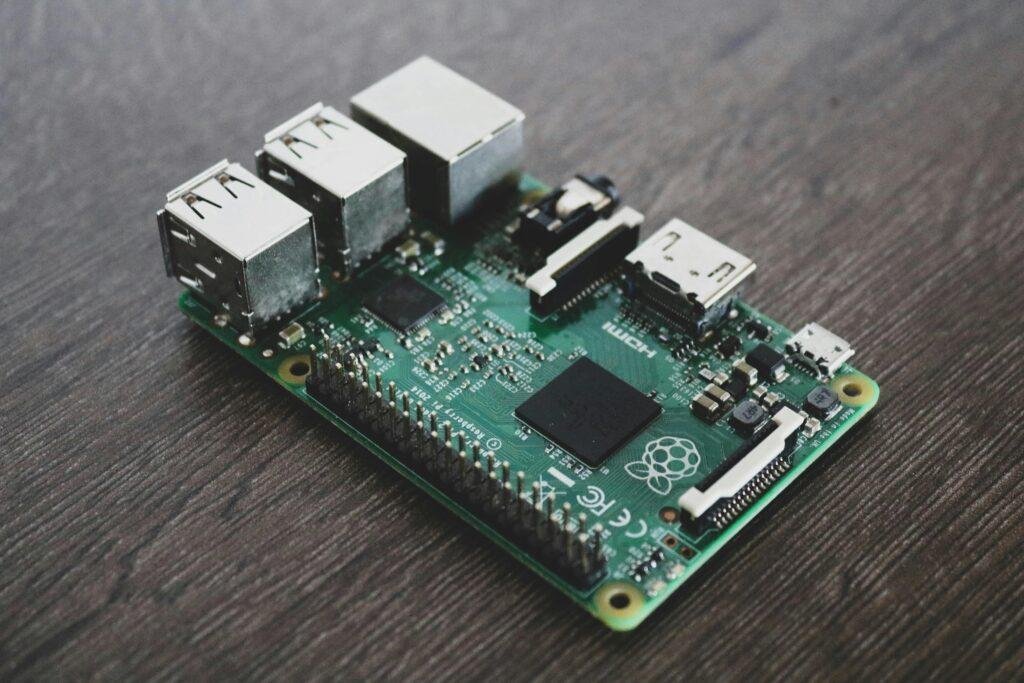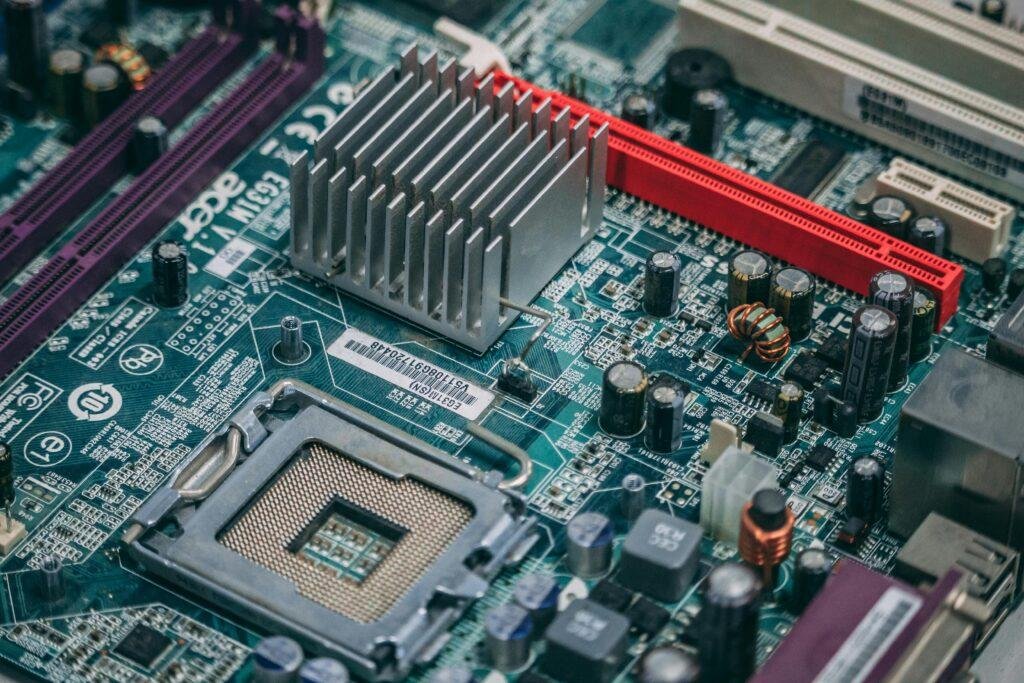The electronic component industry is the backbone of modern technology, providing the necessary building blocks for everything from consumer gadgets to industrial machinery. As global technological innovation accelerates, the demand for electronic components continues to surge, creating abundant opportunities for businesses within the industry. In this blog, we will explore key growth opportunities in the electronic component industry, emerging trends, and strategic approaches businesses can adopt to capitalize on these prospects.

1. Expanding Role of Electronic Components in Everyday Life
This integration of electronic components across various industries- from consumer electronics to automotive, healthcare, and industrial automation-is an ongoing business growth opportunity. All the electronics used in smartphones electric vehicles, medical devices, or renewable energy systems, for instance, use semiconductors, capacitors, resistors, and integrated circuits (ICs). As this technology grows and expands, the demand for electronic components is likely to increase immensely.
Key Growth Drivers:
Consumer Electronics: The insatiable demand for newer, faster, and more efficient devices such as smartphones, laptops, wearables, and IoT-enabled products fuels the need for more advanced electronic components.
Electric Vehicles (EVs): Global shifts toward electric mobility are major drivers for the electronic components industry since electric vehicles rely heavily on semiconductor chips, sensors, and power management systems.
Healthcare Devices: The increased use of medical technology and healthcare devices, especially diagnostics, imaging, and wearable health monitors, also increases the demand for specific components.
2. Automation and Industry 4.0
Another major growth opportunity for the electronic components sector is through the automation of manufacturing processes using Industry 4.0 technologies. Smart factories, AI-driven analytics, and robotics all rely on advanced electronic components, making this a rapidly growing market for these technologies. As industries look to increase efficiency and productivity, they rely on IoT sensors, actuators, and high-performance semiconductors.
Smart Manufacturing Systems: There is a growing demand for electronic components that power smart manufacturing systems, including sensors, robotics, and communication systems.
AI and Machine Learning: Components that enable artificial intelligence (AI) and machine learning algorithms, such as graphics processing units (GPUs) and specialized processors, are expected to experience strong growth as AI adoption continues to rise across sectors.
Automation in Agriculture and Logistics: Industries such as agriculture and logistics are adopting automation to streamline operations, leading to increased demand for automation-friendly electronic components, including precision sensors, tracking devices, and data transmission modules.
3. Emerging Technologies and Innovations
Technological advancements present abundant growth opportunities for businesses within the electronic component industry. Key areas of innovation include:
a. 5G Technology
5G technology is going to revolutionize industries by providing faster communication speeds, low latency, and the ability to connect more devices at the same time. The rollout of 5G networks is creating demand for new electronic components, particularly RF (radio frequency) components, antennas, and power amplifiers that are integral to 5G infrastructure.
b. Quantum Computing
Although still in its infancy, quantum computing is the future of high-performance computing. As the industry evolves, there will be a need for specialty electronic components, like quantum chips and cryogenic components, that will offer a different growth opportunity for businesses within the electronic component space.
c. Flexible Electronics
Flexible and stretchable electronics will change industries like healthcare, wearables, and automotive. Their requirement is a new class of lightweight, robust, and stretchable components. As these electronics continue to find traction in the market, this market for flexible electronic components would be expected to grow rapidly.
d. Renewable Energy Systems
The transition to renewable energy sources, including solar, wind, and energy storage systems, is compelling the demand for more sophisticated electronic components, such as power converters, inverters, and controllers. The growth in the green energy sector also provides significant opportunities for electronic component companies to expand their product lines.
4. Global Supply Chain and Market Dynamics
The electronic component industry operates within a highly globalized market, where demand and supply chain dynamics have been seen to shift in many ways and are both opportunities and challenges for businesses. Major factors of influence include:
a. Supply Chain Optimization
With the ongoing global semiconductor shortage, businesses that can deliver reliable supply chains and scale up will find significant opportunities for growth. Companies that invest in local manufacturing, reshoring efforts, or diversify their supplier base to reduce dependency on a single source are better positioned to meet customer demand and maintain competitive advantage.
b. Strategic Partnerships and Mergers
Strategic partnerships, mergers, and acquisitions are, therefore, significant opportunities to expand the capabilities of business, diversify product lines, and enter new markets. Companies can leverage their strength to drive growth in the increasingly complex and competitive landscape by acquiring companies with complementary technologies or entering joint ventures with emerging firms.
c. Sustainability and Ethical Sourcing
With increased consciousness among consumers and businesses towards sustainability, the industry is driven to move in this direction by adopting greener practices. Companies focusing on energy-efficient components, recycling, and sourcing responsibly will likely see increasing popularity in the market. As the demand for products increases due to growing niches in the area of ecological considerations, such companies stand to benefit.

5. Regional Market Insights and Growth Opportunities
Global demand for electronic components is growing, but regional trends and market conditions vary by region.
a. North America
North America remains an important market for high-performance semiconductors. It includes industries such as aerospace, automotive, healthcare, and defence, which increase the demand for these components. Companies in the region that emphasize innovation, R&D, and manufacturing of advanced semiconductors, sensors, and ICs will continue to grow.
b. Asia-Pacific
The Asia-Pacific region, especially countries such as China, Japan, South Korea, and India, is a hotbed of electronic component production and consumption. With a rapidly growing consumer electronics market and other sectors, such as electric vehicles and smart manufacturing, businesses are presented with numerous opportunities for expansion in the region.
c. Europe
Europe is investing more in digitalization and green technologies, thereby opening up growth opportunities for businesses engaged in power electronics, energy-efficient components, and renewable energy systems. The European Union's efforts to reduce carbon emissions and increase energy efficiency will spur further demand for environmentally friendly electronic components.
6. R&D Investment
Investment in R&D will be critical to secure the competitive advantage of business organizations within the electronic components industry. New technologies, superior quality product development, and creating solutions specific to emerging industries will serve as a significant market differentiator for companies. A big return on investment can be expected from research and development in areas related to 5G, quantum computing, flexible electronics, and power-efficient components.
Key areas for R&D investment
Semiconductor Innovation: With the development of more energy-efficient, high-performance semiconductor chips and processors, demand in the industry will be significant across various sectors.
IoT-Enabled Components: As the adoption of IoT increases, companies that focus on low-power, high-connectivity components for IoT devices will experience significant growth.
Wearable Technology: As wearables become more mainstream, investing in miniaturized, durable components for health monitoring, fitness tracking, and communication devices will be lucrative.
7. Future of Business Growth in the Electronic Component Industry
Looking into the future, the electronic component industry will evolve and expand further. Advancements in technology, changes in consumer preferences, and sustainability efforts will all provide new business opportunities. Companies that are positioned ahead of the curve, investing in emerging technologies, optimizing supply chains, and offering innovative products, will be well-positioned for growth.
8. Increasing demand for consumer electronics
The rise of consumer electronics is on the globe and is being driven both by technological advancements and a surging middle-class population in developing markets and regions. All these things mean that there is a more constant demand for high-grade electronic components for smartphones, laptops, televisions, wearables, and home automation.
The innovation in device features, performance, or design directly increases the demands on more sophisticated and dependable components.
Smartphones and Tablets: For every new generation of devices, the level of complexity required in electronic components increases. The high-level processors to rich displays and power management solutions, the more the business could cash on smartphones and tablets.
Wearables: Wearable devices like fitness trackers, smartwatches, and health monitoring gadgets are gaining popularity. Specialized components like sensors, batteries, and flexible circuits are needed for these products, which provides a niche market for suppliers.
Smart Homes: As smart home devices such as smart thermostats and security cameras gain popularity, businesses have opportunities to provide components that enable IoT connectivity, energy efficiency, and security.
9. Growth in Electric Vehicles (EVs)
The electric vehicle industry is a rapidly growing exponent of an exponentially growing market into cleaner and more sustainable forms of transport. EVs are rather highly dependent upon electronic components for their operation-the batteries and power electronics up to and including sensors and control systems. As globalization takes strides toward electric mobility, the trend is bound to be more beneficial for this industry at large.
Battery Technology: The heart of every electric vehicle is based on high-performance batteries. Developing and manufacturing power management components, BMS, and advanced energy storage technologies can lead to big growth for those businesses.
Power Electronics: Electric vehicles rely on the conversion of electric power in efficient ways that use control and energy management systems that depend on various sophisticated electronic components, like inverters, converters, and semiconductors.
Autonomous Driving: Autonomous vehicles are equipped with numerous sensors, including LiDAR, radar, cameras, and GPS systems. The demand for sensors and communication modules that enable self-driving capabilities provides a significant opportunity for companies to supply these components.
10. Automation and Industry 4.0
Advances in manufacturing industries include the development of automation technologies such as robotics, artificial intelligence (AI), and Internet of Things (IoT). It has been described as Industry 4.0 and is marked by the integration of smart factories, real-time data, and automation, increasing operational efficiency. A high volume of electronic components associated with the systems brings vast opportunities to businesses.

